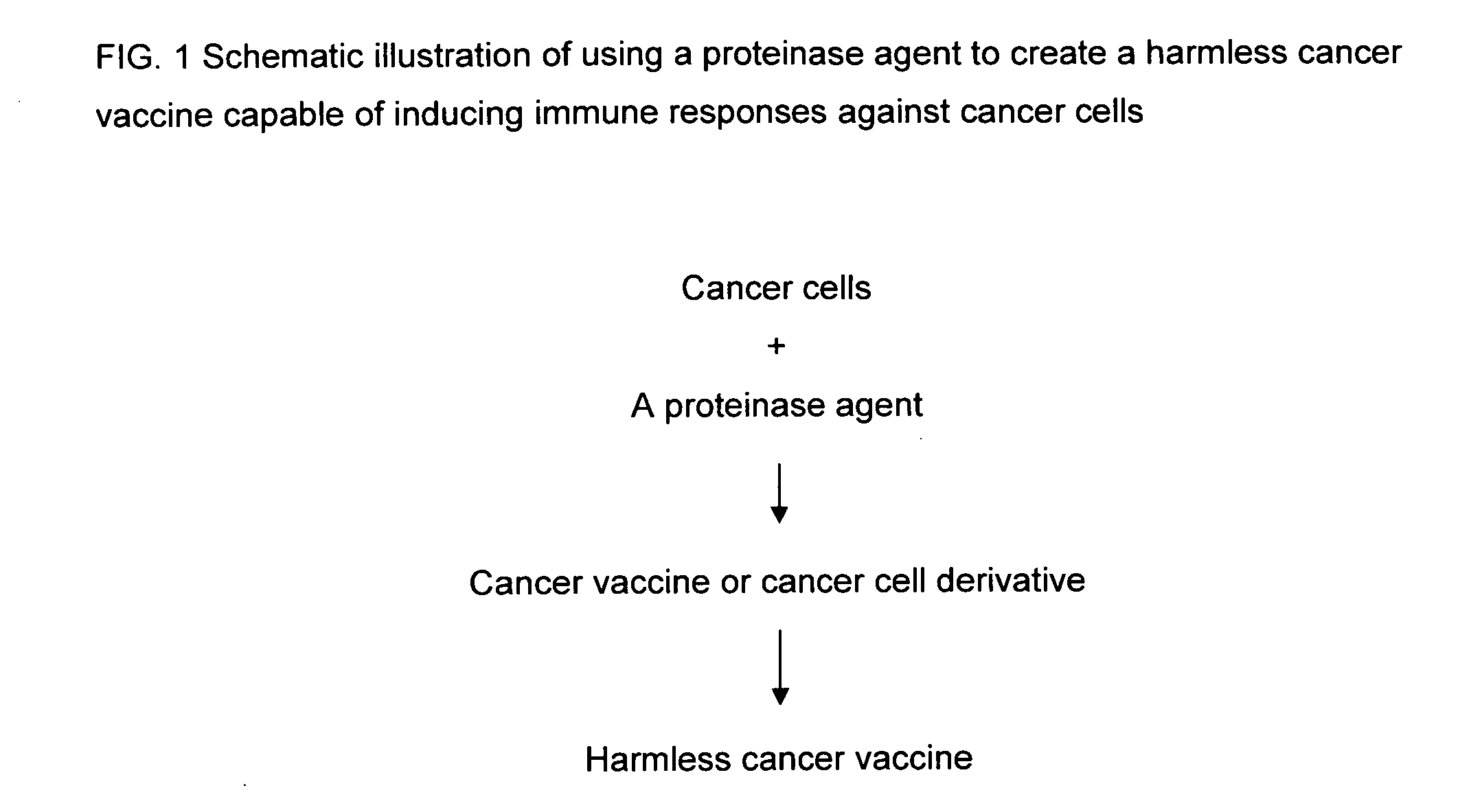Proteinase-engineered cancer vaccine induces immune responses to prevent cancer and to systemically kill cancer cells
a cancer vaccine and protein-engineered technology, applied in the field of protein-engineered cancer vaccine inducing immune responses, to achieve the effect of inducing immune responses against cancer cells
- Summary
- Abstract
- Description
- Claims
- Application Information
AI Technical Summary
Benefits of technology
Problems solved by technology
Method used
Image
Examples
Embodiment Construction
[0015]Vaccine refers to a harmless variant or derivative of a pathogen that is presented to the body in order to induce an immune response against the pathogen. A cancer vaccine refers to harmless variants or derivatives of cancer cells that are presented to the body in order to induce immune responses against cancer cells for cancer prevention or immunotherapy of active cancers. The cancer vaccine is composed of variants or derivatives of cancer cells because cancer cells are heterogeneous and mutating cells that are not a clone of the same cells or a mixture of several cancer clones. Thus, a cancer vaccine induces immune responses (not a single immune response) against cancer cells. Furthermore, a singer cancer vaccine may induce limited immune responses depending on the mutation information contained in the vaccine. Multiple cancer vaccines may be used for multiple cancer prevention or treatments. Targeted cancers may include any forms including cancer cells not forming tumors, c...
PUM
| Property | Measurement | Unit |
|---|---|---|
| volume | aaaaa | aaaaa |
| volume | aaaaa | aaaaa |
| volume | aaaaa | aaaaa |
Abstract
Description
Claims
Application Information
 Login to View More
Login to View More - R&D
- Intellectual Property
- Life Sciences
- Materials
- Tech Scout
- Unparalleled Data Quality
- Higher Quality Content
- 60% Fewer Hallucinations
Browse by: Latest US Patents, China's latest patents, Technical Efficacy Thesaurus, Application Domain, Technology Topic, Popular Technical Reports.
© 2025 PatSnap. All rights reserved.Legal|Privacy policy|Modern Slavery Act Transparency Statement|Sitemap|About US| Contact US: help@patsnap.com



